Lupus — you may have heard the name, but do you know anything about this health problem? The autoimmune condition affects an estimated 1.5 million Americans, so it’s worth educating yourself on it when you get the chance.[1]
Of course, while lupus is a well-known disease in medical circles, it’s only in recent years that the illness has been thrust firmly into the public eye. Acclaimed actress and singer, Selena Gomez, revealed that she suffers from lupus back in 2017.[2] The young star brought a wealth of awareness to this somewhat misunderstood disease.
Women are the major sufferers of this disease. A massive 90% of new cases are women who are in their childbearing years, according to the latest statistics.[3] That means that we need to be vigilant when it comes to spotting the symptoms of lupus in women. So, without further ado, let’s take a deeper look at the condition, its signs, and what to do about it.
What is Lupus?

First things first, let’s deal with what lupus is. While you may have heard of it before now and even read stories about Selena Gomez’s struggle, you might not know the ins and outs of it. Lupus is a chronic, autoimmune disease which happens when you have an overactive immune system.[4] In short, when a person’s immune system is not functioning correctly, it can start to attack the body rather than incoming viruses.
This type of condition is typically known as a systemic condition, which means that it can affect a whole range of areas of your body. You may find that your skin, blood, brain, organs, and joints are affected by this condition when you suffer from it. That means that this illness can have serious repercussions for the people that it affects. In the long-term, it can lead to more serious health problems, such as kidney failure and heart problems.
How Do You Get Lupus?

Now that you know what lupus is, let’s talk about the reason it occurs. What causes lupus? While there is not one definitive cause, there could be a range of factors that contribute to this illness. Experts believe that certain people are predisposed to this illness.[5] Genetics play a role here but it’s not entirely clear whether lupus is hereditary.
If you are already predisposed to the disease, you may find that certain lifestyle and bodily changes affect it. One of the most common theories when it comes to the cause is that it has to do with hormonal changes within the body.
Scientists believe that since the most commonly affected group is women of childbearing age, the condition may be triggered by hormones.[6] Plus, experts also believe that long-term exposure to particular insecticides could heighten a person’s risk.[7]
10 Common Lupus Symptoms in Women
Worried that you may be at risk of lupus? Learning all you can about this chronic, autoimmune disease will help you to identify whether you need medical attention. The worrying thing about this particular health condition is that it can be linked to a broader range of problems that affect women.
For that reason, some of the most common lupus symptoms are also signs of other problems, such as heart disease or osteoporosis. When you identify that you have some of the most common symptoms, you can take steps toward dealing with the problem. Let’s take a look at 10 of the lupus symptoms in women of which you should be aware.
1. Skin rashes
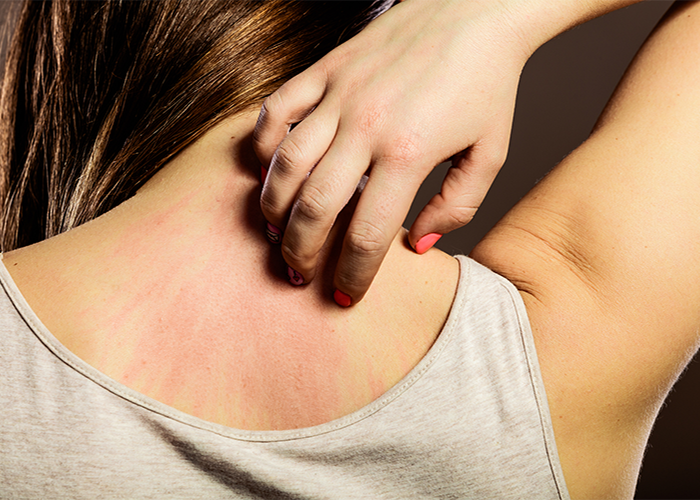
One of the most visible lupus symptoms in women is the humble skin rash. When you notice odd markings on your skin, it’s important that you do something about them sooner rather than later. Between 70 and 80% of people suffering from lupus have skin lesions, i.e. abnormalities or rashes on the skin.[8]
Of course, there is one specific type of rash of which you should be aware. 30% of patients will get a pathognomonic lupus or butterfly rash across their nose area.[9] The red rash usually spans both a person’s cheeks and their nasal bridge to create a butterfly-like shape. It can be present for days or even weeks at a time and may be painful.[10]
When you see any type of rash, you need to take note of it and watch out for any dramatic changes that occur over time. While not all rashes will be a sign of this disease, it’s worth getting any unexpected skin-related changes checked by a doctor.
Fact: Between 70 and 80% of lupus sufferers experience some form of skin rashes![11]
2. Fevers
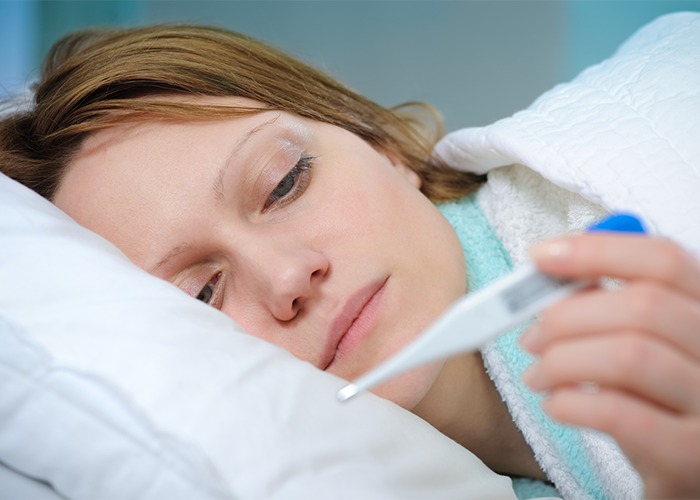
Another of the common symptoms of lupus in women is a recurring fever.[12] The infection often causes people to have strong and severe fevers.
If your fever is above the normal heat of 98.6 degrees Fahrenheit, it could be worth seeking medical attention. Needless to say, this temperature could be indicative of a whole range of health conditions. However, if it is combined with some of the other signs of lupus, it may mean that you have the illness.
3. Joint pain
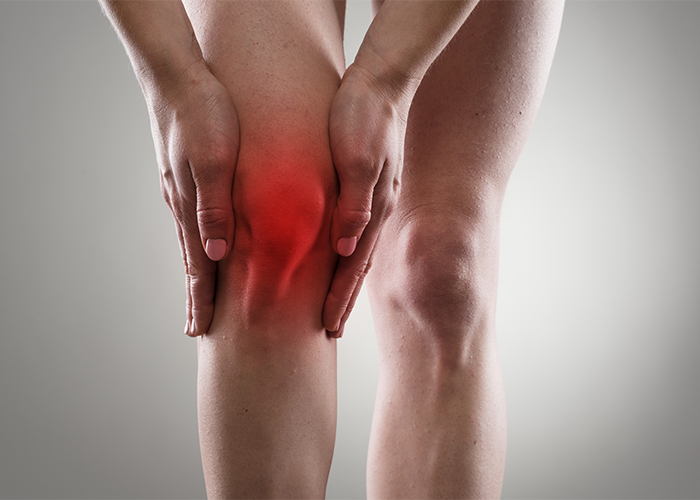
Are you feeling achy and struggling with annoying pains? One of the most common lupus symptoms is joint pain.[13] The reason is simple. A huge 95% of patients who have lupus also have arthritis and arthralgias.[14] You may experience stiffness in your neck, shoulders, upper arms, or thigh areas when you are a sufferer. You should note that this sign of lupus doesn’t always include swelling, although, it can for some patients.
When you first notice the stiffness and pain, it’s crucial that you get some help as soon as you can. Seeing a doctor and getting a medical diagnosis will help you to deal with the problem head-on. The joint pain will not get better by itself and you shouldn’t put up with it.
4. Hair loss

While you’re brushing your hair, you notice something different. Your locks feel thinner. You look at your brush to notice that it is full of hair. Alopecia, or hair loss, is one of the most troubling lupus symptoms in women. Should this sign be present, it will usually create a bald patch on the temple of the head.[15] While this lupus sign is stressful, it’s also something that you should never simply sweep under the rug.
Of course, there are many reasons that your hair may fall out. One report from Harvard Health suggests that one-third of women will experience hair loss at some point in their lives.[16] Some medication can cause hair loss while both mental and physical stress could also play a real role in this particular problem.[17] It is not until you speak to a medical professional that you can determine what the cause of this sign is.
5. Kidney problems

Continuous kidney problems could be one of the lupus symptoms in women. In fact, research suggests that half of all lupus sufferers have kidney problems too.[18] Of course, there’s a range of minor symptoms that are associated with kidney issues.
Those crucial signs include trouble breathing, poor sleep patterns, swelling of the feet and ankles, loss of appetite, cramps, cases of itchiness, and vomiting.[19] Should you experience any combination of the above issues on a regular basis, you need to ensure that you see a doctor soon.
Since your kidneys are responsible for filtering out the waste from your blood, they play a vitally important role in your overall health.[20] Should you suffer complete kidney failure, you will need to have a kidney transplant to make a full recovery.[21]
When you first start to experience the symptoms of this disease, your doctor will be able to advise you on what to do next to combat the problem. If the kidney problems are related to lupus, your doctor will also be able to help you with this issue as soon as it is identified.
6. Chest pain

Lupus can often trigger certain heart and lung problems in patients.[22] For that reason, one of the lupus symptoms in women tends to be regular chest pain.
If you tend to experience bouts of aches and pains in your chest area, that is a real red flag and one that you should never ignore. You may find that the pain comes and goes or that it is present when you are trying to breathe as deeply as possible. Talk to a medical professional immediately.
7. Trouble breathing

Do you regularly experience shortness of breath or trouble breathing? While many factors can play a role in how well a person breathes, one of the lupus symptoms in women tends to be this issue.
As we have covered, one of the major lupus symptoms in women tends to be associated with the lungs.[23] It should come as no great surprise that this problem is linked to breathing problems in the long term.
8. Mouth ulcers
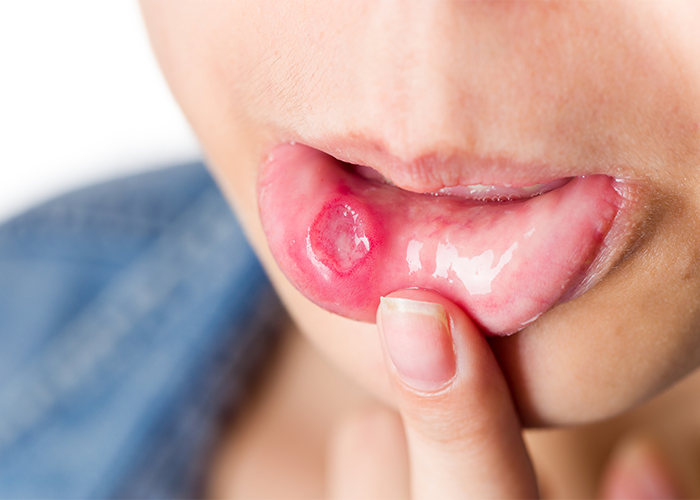
Mouth ulcers are sores that appear inside your mouth and are usually red or yellow in color.[24] You might find that the ulcers appear on the inside of your cheeks, your tongue, and your gums. In rare cases, they will also present themselves on the roof of your mouth.
While most people get mouth ulcers from time to time, if you find that yours come back on a regular basis, they may be the sign of a deeper problem. These sores could actually be one of the minor lupus symptoms in women, and so they are worth checking out.
These ulcers could be more serious than they first appear. The sores are one of the lupus signs used by the American College of Rheumatology to diagnose the disease.[25] In some cases, the sores won’t cause you pain or irritation. Regardless of this fact, you need to be aware of them and seek medical help as soon as possible. It’s better to be safe than sorry.
9. Sickness
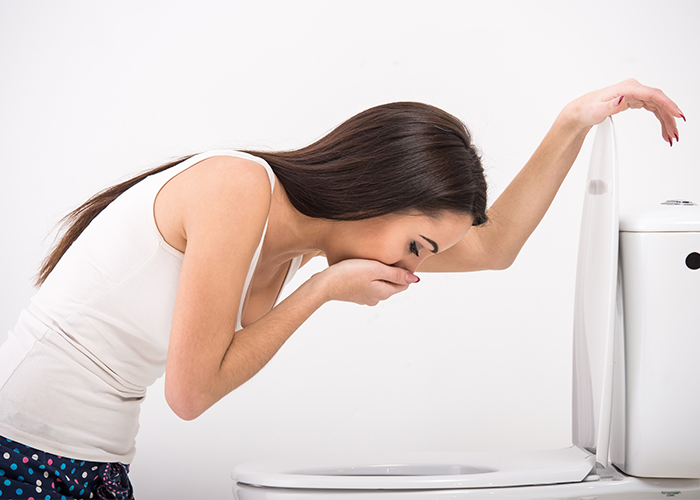
Experiencing bouts of nausea could be one of the tell-tale lupus symptoms in women.[26] You should already know that feeling sick is a red flag when it comes to your health.
It’s a small yet unmistakable sign that something is not quite right and you need to get it checked up. While a short period of sickness may not mean anything at all, if it becomes a regular occurrence, you should do something about it. Again, getting some medical tests from your doctor could be the key to maintaining a high level of health and wellness.
10. Dry eyes

Dry and sore eyes may be one of the more unexpected lupus symptoms in women. This is actually a symptom of a condition called keratoconjunctivitis sicca, which affects around 25% of lupus sufferers.[27]
If you are affected by this lupus symptom, you might find that it causes you discomfort on a daily basis. While eye drops could ease the irritation temporarily, they will not cure the problem entirely. A medical professional will be able to tell you whether your dry eyes is a sign that you have lupus.
Do any of the above sound familiar? It’s important to realize that these signs alone don’t necessarily mean that you are suffering from lupus. However, it’s always worth getting a checkup to make sure that you are healthy. If you are feeling at all worried about the situation, book yourself a doctor’s appointment and ask a professional for their advice.
Are There Different Types of Lupus?

Much like other common health conditions, lupus comes in a range of different forms and severities. Understanding the various types of lupus will give you an overview of these problems and help you get to grips with the facts. Here’s a quick breakdown of the different types of lupus and what makes them unique.
Systemic Lupus Erythematosus (SLE)
Around 70% of all lupus cases are Systemic Lupus Erythematosus (SLE).[28] The instances of this type of lupus range dramatically from mild to serious. The severity of your case will depend on a variety of factors. Those suffering from this form of the autoimmune problem will experience many of the lupus symptoms we have listed here. Needless to say, medical attention is necessary in order to properly manage this condition.
Drug-Induced Lupus
As the name suggests, drug-induced lupus is a form of the illness which is triggered by drugs or medication.[29] When you first get diagnosed with lupus, your doctor will run certain tests to find out what the cause of the problem is. Should they find that your medication is causing the problem, the chances are that they will stop your prescription. In most cases of drug-induced lupus, the symptoms of the issue stop when you stop taking the medicine.
Cutaneous Lupus Erythematosus
This next subtype of lupus affects the skin.[30] Cutaneous Lupus Erythematosus can be a part of the Systemic Lupus Erythematosus (SLE) illness but can also be present without that disease at all.[31] Usually, you will find that a dermatologist gives you your diagnosis for these types of lupus. That means that you may need to see a specialist.
Neonatal Lupus
Should a woman who suffers from lupus have a baby, the child may suffer from Neonatal Lupus.[32] The health condition usually clears up on its own after about six months. Of course, the mother should work closely with a pediatrician during this period.
Is There a Lupus Test?

Currently, there is not one single lupus test. The major obstacle here is that many of the lupus symptoms in women could also be signs of other diseases and problems. So, when a person starts to display lupus symptoms, doctors must run a series of different trials and tests to figure out what the underlying problem is.[33] These tests include the following:
- Blood chemistry and urine tests
- Complete blood count (CBC) test
- Antibody testing
- Complement proteins tests
- Kidney or skin biopsies
- Antinuclear antibody (ANA) blood test
- Inflammation markers tests
The above laboratory tests allow medical professionals to eliminate the various causes of the displayed symptoms. After the doctor has done so, they can fully diagnose a case of lupus and offer the right treatment and further steps.
How to Treat Lupus

Once you have had your lupus diagnosis, you might be wondering what to do next. Sadly, there is no cure for this illness. The treatment you need will depend on your particular type of lupus and how serious the condition is. Regardless of this, you will need to have regular checkups with your doctor to manage the condition.[34] Medical treatments for the chronic condition include:
- Disease-modifying antirheumatic drugs (DMARDs)
- Corticosteroids
- Nonsteroidal anti-inflammatory drugs (NSAIDs)
- BLyS-specific inhibitors
- Immunosuppressive agents
Aside from the medical solutions, there are lifestyle changes you can make that will also allow you to manage the condition. Eating a healthy and balanced diet could be key. Many experts have curated a specific lupus diet, which is ideal for maintaining peak health. You should also make sure that you exercise regularly as well as getting the rest that you need.

Conclusion
Are you feeling more clued up about lupus? Now that we’ve gone over some of the most common lupus symptoms in women, you should have a deep understanding of the way in which this particular illness manifests. It’s crucial to understand that this health problem is manageable with the proper support and advice.
While you may need to make some lifestyle changes along the way and get regular medical attention, doing so will be worthwhile in the long run. Of course, if you’d like to know more about the lupus condition or how you can get the help you need, your doctor will be able to guide you along the way.

Share this Image On Your Site
References
- [1] https://www.arthritis.org/about-arthritis/types/lupus/what-is-lupus.php
- [2] https://www.lupus.org/personal-stories/how-selena-gomezs-lupus-led-to-a-kidney-transplant
- [3] https://www.ncbi.nlm.nih.gov/pmc/articles/PMC3391953
- [4] https://www.arthritis.org/about-arthritis/types/lupus
- [5] https://www.arthritis.org/about-arthritis/types/lupus/causes.php
- [6] https://www.arthritis.org/about-arthritis/types/lupus/causes.php
- [7] https://www.arthritis.org/about-arthritis/types/lupus/causes.php
- [8] https://www.ncbi.nlm.nih.gov/pmc/articles/PMC3391953
- [9] https://www.ncbi.nlm.nih.gov/pmc/articles/PMC3391953
- [10] https://www.ncbi.nlm.nih.gov/pmc/articles/PMC3391953
- [11] https://www.ncbi.nlm.nih.gov/pmc/articles/PMC3391953
- [12] https://www.ncbi.nlm.nih.gov/pmc/articles/PMC3391953
- [13] https://www.ncbi.nlm.nih.gov/pmc/articles/PMC3391953
- [14] https://www.ncbi.nlm.nih.gov/pmc/articles/PMC3391953
- [15] https://www.ncbi.nlm.nih.gov/pmc/articles/PMC3391953
- [16] https://www.health.harvard.edu/staying-healthy/treating-female-pattern-hair-loss
- [17] https://www.health.harvard.edu/staying-healthy/treating-female-pattern-hair-loss
- [18] https://www.ncbi.nlm.nih.gov/pmc/articles/PMC3391953
- [19] http://www.kidneyfund.org/kidney-disease/chronic-kidney-disease-ckd
- [20] http://www.kidneyfund.org/kidney-disease/chronic-kidney-disease-ckd
- [21] http://www.kidneyfund.org/kidney-disease/chronic-kidney-disease-ckd
- [22] https://www.ncbi.nlm.nih.gov/pmc/articles/PMC3391953
- [23] https://www.ncbi.nlm.nih.gov/pmc/articles/PMC3391953
- [24] https://www.dentalhealth.org/mouth-ulcers
- [25] https://www.ncbi.nlm.nih.gov/pmc/articles/PMC3391953
- [26] https://www.ncbi.nlm.nih.gov/pmc/articles/PMC3391953
- [27] https://www.ncbi.nlm.nih.gov/pmc/articles/PMC3391953
- [28] https://www.arthritis.org/about-arthritis/types/lupus/what-is-lupus.php
- [29] https://www.arthritis.org/about-arthritis/types/lupus/what-is-lupus.php
- [30] https://www.arthritis.org/about-arthritis/types/lupus/what-is-lupus.php
- [31] https://www.ncbi.nlm.nih.gov/pmc/articles/PMC3927537
- [32] https://www.arthritis.org/about-arthritis/types/lupus/what-is-lupus.php
- [33] https://www.arthritis.org/about-arthritis/types/lupus/diagnosing.php
- [34] https://www.arthritis.org/about-arthritis/types/lupus/treatment.php








